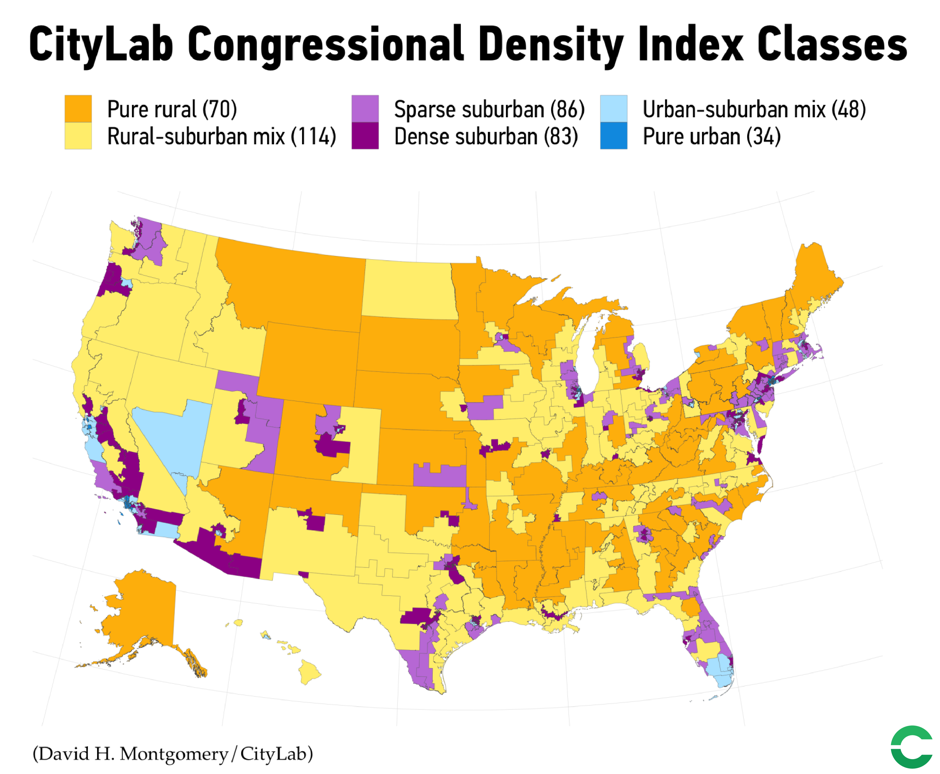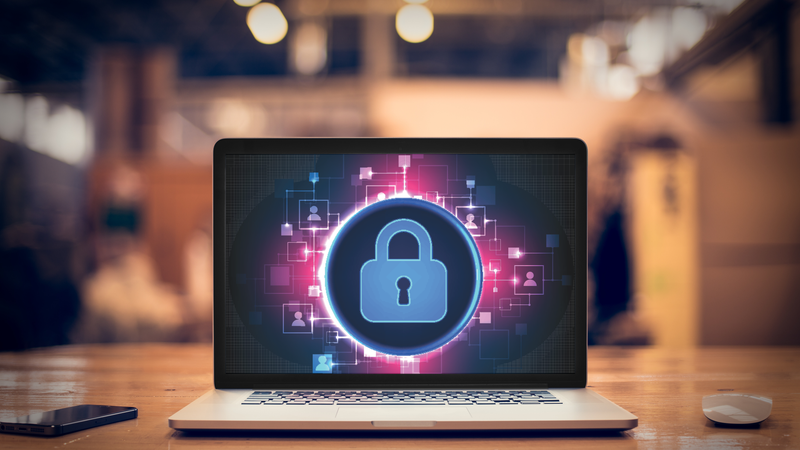Pres. Trump Replaces Head Of Federal Personnel Office With Top OMB Official
This is not just a big deal, it’s huge! And the media seems to have ignored it.
President Trump replaces the director of federal personnel, after the previous official stepped down from his post.
Jeff Pon resigned from his position at the Office of Personnel Management, but did not give any reason for his departure, according to a White House official Friday.
The president picked Margaret Weichert, who serves as the deputy director of the Office of Management and Budget to lead the agency.
The department oversees the federal civilian workforce.
Bold mine.
From http://www.oann.com/pres-trump-replaces-head-of-federal-personnel-office-with-top-omb-official/
From http://www.oann.com/pres-trump-replaces-head-of-federal-personnel-office-with-top-omb-official/
How the Suburbs Will Swing the Midterm Election
Another so-called professional analysis of the November elections. Filled with all sorts of facts and suppositions on what voters are going to do.
Worked out real well in 2016, didn’t it?
“Democrats have a large enough pool where they can win some of the suburban districts, not all of them, (and) win some of the rural districts, not all of them,” adds Askarinam. “They only need to build up to 23 seats. There are dozens of seats that are competitive.”
Increasingly in America, density is our political destiny, with suburbs playing the crucial role not just in who is elected president but also who controls Congress. In 2018, more than just about any other year, those two go hand in hand.
More of this mind-boggling stuff @ https://www.citylab.com/equity/2018/10/midterm-election-data-suburban-voters/572137/
The Coming Red Tide
And, while this basically says what I want to read, it’s but another “expert opinion” about how people are going to vote in November. Makes sense – but so did the polls leading up to election night in November 2016.
There’s an enthusiasm gap favoring the Republicans in November.
On the other hand, the Democrats are running on a bizarre platform of impeaching the president; raising taxes; and waging Maoist-style persecution campaigns against straight, white males (simply for existing).
What an inspiring platform.
The red tide is coming. And, just like Trump’s “improbable” win in 2016, the Left has only itself to blame.
Republicans fear Democratic ‘blue wave’ spreading to once-safe districts @ http://www.oann.com/state-of-play-republicans-fear-democratic-blue-wave-spreading-to-once-safe-districts/
Deciding Vote in Blue States’ Legal Battles with Trump May Be Kavanaugh @ https://www.westernjournal.com/deciding-vote-blue-states-battles/
Election security is a mess, and the cleanup won't arrive by the midterms
Many experts believe a proper fix for election security won't come until at least 2021.
From the time we cast our ballots until they are counted. That’s the time when our system is most at risk. We continually hear about voter fraud but everyone says it doesn’t exist – at least in numbers to make a difference. Many of us believe differently.
Unlike with the European Union's GDPR, a law addressing data privacy, there's no all-encompassing standard for securing the election process. Operations are left up to state and county officials. The closest thing to a standard are the Voluntary Voting System Guidelines from the US Election Assistance Commission, and as the name indicates, they aren't mandatory.
Even if efforts to improve election security had started on Jan. 1, 2016, it would take until at least 2021 to fix things, said Chris Wysopal, the chief technology officer at security research firm Veracode.
"These are major changes. This is something that should start now and it's going to take five years, probably, to do," Wysopal said. "At this moment, we can only really do response and detection. We're not great at prevention."
The full article is @ https://www.cnet.com/news/election-security-is-a-mess-and-the-cleanup-wont-arrive-by-the-midterms/
Democrats Turn on Avenatti
[He even looks like a slimebag]
How quickly the worm turns. The Dims can’t tolerate losing and will go after anyone they think is responsible for them doing so. In this case, it couldn’t happen to a nicer guy.
“Democrats and the country would have been better off if Mr. Avenatti spent his time on his Iowa vanity project rather than meddling in Supreme Court fights,” a senior Senate Democratic aide told CNN, referring to the idea that Avenatti is actually considering trying for the Democratic presidential nomination in 2020, and exploring an Iowa primary bid in the process. “His involvement set us back, absolutely.”
Another anonymous Democratic senator bluntly described Avenatti as “not helpful at all.”
The best part of all of this is that Avenatti has fired back at the Democrats, calling them “cowards.”
Blame Game: Avenatti and Dems Turn on Each Other After Kavanaugh Confirmation @ https://www.westernjournal.com/ct/blame-game-avenatti-dems-turn/
MSNBC’s Scarborough: Media Coverage of Kavanaugh Accusations Has Been ‘One-Sided’, ‘Biased’
I read this with a degree of disbelief. What is going on with him and his sidekick?
MSNBC “Morning Joe” co-host Joe Scarborough said on Wednesday that the media coverage of the sexual assault accusations against Supreme Court nominee Brett Kavanaugh has been “one-sided” and “biased.”
“The media coverage of this has been so one-sided, it’s been so biased,” he said. “There’s been this presumption from the beginning that every allegation made against the judge was true.”
And here’s the kicker:
Scarborough’s criticism of the media’s coverage comes despite the fact that he doesn’t support Kavanaugh’s nomination.
“Before the allegations, I didn’t think he should be on the Supreme Court,” Scarborough said.
Scarborough concluded by saying that “The media has dropped the ball on this from the very beginning,” and that ” just like Trump being elected, going to be shocked by what they see in the polls.”
Joe Scarborough Forced To Admit It: ‘Man, That Is a Low Unemployment Rate’ @ https://www.westernjournal.com/ct/joe-scarborough-forced-admit-man-low-unemployment-rate/
Even CNN Admits It: ‘Democrats Got Outplayed On Kavanaugh’ @ https://www.westernjournal.com/ct/even-cnn-admits-democrats-got-outplayed-kavanaugh/
How Long Can the U.S. Military’s Golden Hour Last?
A lengthy but most interesting article. And it’s not only for military injuries but has come to play a vital role in civilian injuries as well. Firefighters and EMT have many of these new technologies available to them that were developed on the battlefield.
A major part is how quickly one can get from the injury site to a fully-staffed medical facility. But, there are also advances that are used in the field.
A variety of developing technologies will improve resuscitative care at the front lines. New tools may allow medics working near the point of injury to autonomously establish entry inside the large arteries and veins of the torso. Linked to small catheters that can work inside the vessels, these tools could allow medics to stop bleeding, restore blood volume, and control the circulatory system. New endovascular devices (that is, devices operating inside vessels) could also be coupled with automated drug and fluid delivery tools to provide pain control, anesthesia, and organ support. While this network of technologies is complex, all the elements exist in some form today. The remaining challenges are to miniaturize and integrate them, make them battery-powered, and test them in the lab and in field conditions.
Wearable
biosensors and advanced vital signs monitors, which could serve the
dual purpose of remotely locating and triaging injured troops, are also
on the horizon. Collecting and analyzing large amounts of real-time
patient data (a.k.a. predictive analytics)
from these monitors could help inform and build automated devices such
as ventilators, organ support machines, and infusion pumps. Decision
support and automated devices would expand the medic or corpsman’s
ability to provide golden hour care to a greater number of injured at
any one time.
In
situations where MEDEVAC and other life-saving measures are not
available, telemedicine will also expand the capability of
point-of-injury providers to perform some types of surgeries such as wound debridement, extremity fasciotomy, or amputation. Subsequent prolonged field care
delivered by medics and corpsmen could then include treatment of large
wounds, intra-abdominal injuries, and mangled extremities — injuries
managed inside of a hospital operating room today. Although the science
is less advanced in these areas, the military is investing in research
on antimicrobial dressing systems and self-expanding foams able to be injected into the abdomen to stabilize bleeding and contamination until definitive surgery can occur.
Managing
traumatic brain injury during the new golden hour will be challenging.
In addition to more comprehensive study of new and wearable blast gauge
technologies and improved protection measures to avoid blast exposure,
research is focusing on devices to diagnose concussive traumatic brain
injury and limit severe brain injury. Brain-wave and eye-tracking devices and rapid blood tests
may soon be available to diagnose concussions on the battlefield.
Innovations such as small devices that use light sources and software
algorithms to look inside the skull to diagnose bleeding and then drill a
hole to evacuate blood and relieve pressure could help treat more
severe forms of traumatic brain injury.
Unmanned
technology could also enable a new golden hour paradigm. Drones or
unmanned ground vehicles could preposition — or deliver in real time —
supplies for different tactical situations, a strategy already employed for humanitarian aid in Africa. Additionally, the military is researching whether and how unmanned MEDEVAC
might augment patient evacuation. By creating teams of combat
developers, medics, scientists and engineers to work on these
initiatives, the military is trying to make sure that new technologies
are not merely “cool,” but that they are actually necessary and will be
effective in the golden hour of future wars.
A whole lot more @ https://warontherocks.com/2018/10/how-long-can-the-u-s-militarys-golden-hour-last/
A Guide for Our Allies on How to Work With the US Military
As a vet, I find this very true – and very hilarious.
Here are some highlights about how to work with the U.S. military:
Expect meetings, lots of them But if you go for consensus-based decisions at those meetings, the military officers will consider you “inefficient and lacking focus.” (The guide hints that autonomous relief organizations will balk at getting orders. I smell trouble.)
They will want “in-depth” data about what you are doing. But they are sometimes reluctant to share their own info, citing “operational security.”
If you don’t have plans, the military will make them for you—and will do so from its own perspective. “The military will generally fill the void as it sees fit.”
Their top priority will be protecting their force, and that will affect your operations, “freedom of movement, security and logistics.”
None of the above applies to Special Operators, who are a different breed. “Some significant differences separate these units and individuals from the standard military profile.” In other words, the SOF guys are a bunch of hippies, “culturally aware” and “more flexible and creative and less rigid in their thoughts and ideas.”
Find the Joint Task Force commander’s chief of staff. Tell him who you are and what you are doing. He is, the guide tells us, the “gatekeeper.”
When working with data, the international relief organizations will use the metric system, but U.S. military will not, at least for things like amounts of potable water available. They just like gallons, OK? You got a problem with that? GTFO with your kiloliters.
If you depend on the military for housing, food, communications or transportation, you risk being seen as a “support requirement,” not an asset.
Mexico - Close to 10,000 babies were born last year to mothers aged 10-14
No chance of an education and many born out of wedlock.
“In 70% of cases, those who get the girls pregnant . . . are adults, aged 18 or older. Where does this happen? At home, the place where they should be most protected, most looked after,” José Narro Robles said.
And just what does the government think it can do about it?
More @ https://mexiconewsdaily.com/news/close-to-10000-babies-were-born-to-young-mothers-aged-10-14/
4 Reasons Why 'Climate Change' Is a Flat-Out Hoax
First, after Algore’s rant, it was Global Warming. Not, as that doesn’t seem to be working out so well, it’s Climate Change. What comes next?
Here’s what the author of this piece writes:
First, a disclaimer: I am not a climate scientist. In fact, I am not a scientist of any kind. But I do have a degree in electrical engineering, which I mention only to point out that I am at least as qualified as the next non-scientist to form rational opinions about global warming claims.
In obtaining my degree, I took enough classes in chemistry, physics, and geology to develop a keen appreciation of the scientific method, the best way ever devised for winnowing the truth from fakery and deception. If taking the scientific method into account, no intelligent person can fail to see that the constant drumbeat of wild and hysterical claims about the climate are insults to the search for Truth.
Following are four reasons why I will bet my life that "climate change" is the greatest scientific and political hoax in human history.
1. Rampant scientific fraud
2. The duping of Mr. & Mrs. John Q. Public
3. A long trail of wildly inaccurate predictions
4. Intentional concealment of inconvenient parts of climate history
All of the details and conclusions @ https://www.americanthinker.com/articles/2018/10/4_reasons_why_climate_change_is_a_flatout_hoax.html
The IPCC is still wrong on climate change. Scientists prove it. @ https://www.americanthinker.com/articles/2018/10/the_ipcc_is_still_wrong_on_climate_change_scientists_prove_it.html
NAFTA 2.0: The Best Trade Agreement Ever Negotiated (Except for All of the Others)
I have no idea what the credentials of the author are, but he seems to make a series of good points – with great deal of sarcasm.
The text of the new “United States-Mexico-Canada Agreement” was released last Sunday night, a few hours after I had spoken at an event in Birmingham, England about the virtues of “The Ideal U.S.-U.K. Free Trade Agreement.” To borrow from the late Sen. Lloyd Bentsen: I know the ideal free trade agreement; USCMA, you’re no ideal free trade agreement.
The ideal free trade agreement is one which accomplishes maximum market barrier reduction, enables maximum market integration, forecloses governments’ access to discriminatory protectionism, and obligates the parties to refrain from backsliding.
Here’s how the USMCA stacks up to the ideal free trade agreement, which:
Would provide for the elimination of tariffs as quickly as possible on as many goods as possible and to the lowest levels possible.
Would limit the use of so-called trade remedy or trade defense measures.
Would open all government procurement markets to goods and services providers from the other party.
Would open all sectors of the economy to investment from businesses and individuals in the other party.
Would open all services markets without exception to competition from providers of the other party.
Would ensure that the rules that determine whether products and services are originating (meaning that they come from one or more of the agreement’s parties) are not so restrictive that they limit the scope for supply chain innovations.
Would include rules that prohibit digital trade — data flows that are essential components in the provision of goods and services in the 21st century — from being taxed and unprotected from misuse and abuse.
Would prohibit governments from imposing localization requirements or any particular data architectures that reduce the efficacy of digital services.
Would require businesses to comply with only one of the Party’s regulations if the regulations are comparable in their objectives and outcomes — consumer safety, product reliability, worker safety, environmental friendliness — in order to reduce the costs of complying with two sets of regulations to sell in two different markets, and a regulatory cooperation mechanism to promote mutual recognition of regulatory compliance.
Would include an enforceable dispute settlement mechanism, to ensure that the agreement is followed.
And his conclusion is = none of the criterion has been met
All the details @ https://www.cato.org/blog/nafta-20-best-trade-agreement-ever-negotiated-except-all-others
The illicit trails that defy the urban planners
Kind of a fun piece. The experts decide the way they want things but pedestrians and cyclists find their own. Often defying what the planners intend. So, it’s kind of refreshing to see that one set of planners decided to wait to see what the people wanted.
Michigan State University didn’t put in pavements when new buildings were created. Instead, it waited for students to create their own paths. Photograph: USGS © 2011 Microsoft Corporation
More of the piece @ https://www.theguardian.com/cities/2018/oct/05/desire-paths-the-illicit-trails-that-defy-the-urban-planners
Is Your Mac Secure?
I know almost nothing about Macs so I’m taking this article for granted as giving advice that will help you.
In a recent blog post titled “Hardening macOS,” Ricard Bejarano offers an extensive list of settings you can tweak to make macOS as secure as possible. It’s a comprehensive list of tasks—and we love it—but it’s important that you understand the “why” behind his recommendations, too. Here are a few of his top tips and explanations for why you’re adjusting, installing, or modifying your Mac that way:
System Preferences is your new best friend
Use two accounts instead of one
Let identified developers’ apps work, too
Protecting your privacy
Maybe don’t share your location with every app
Stop Your Mac’s suggestions
Surfing securely with a different DNS













No comments:
Post a Comment